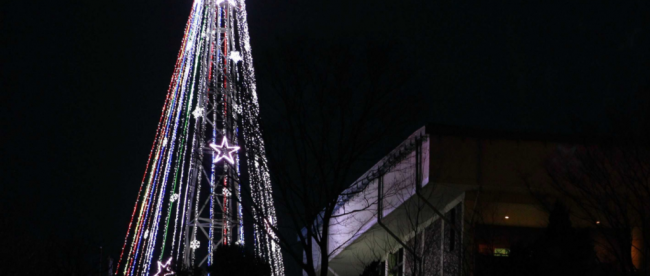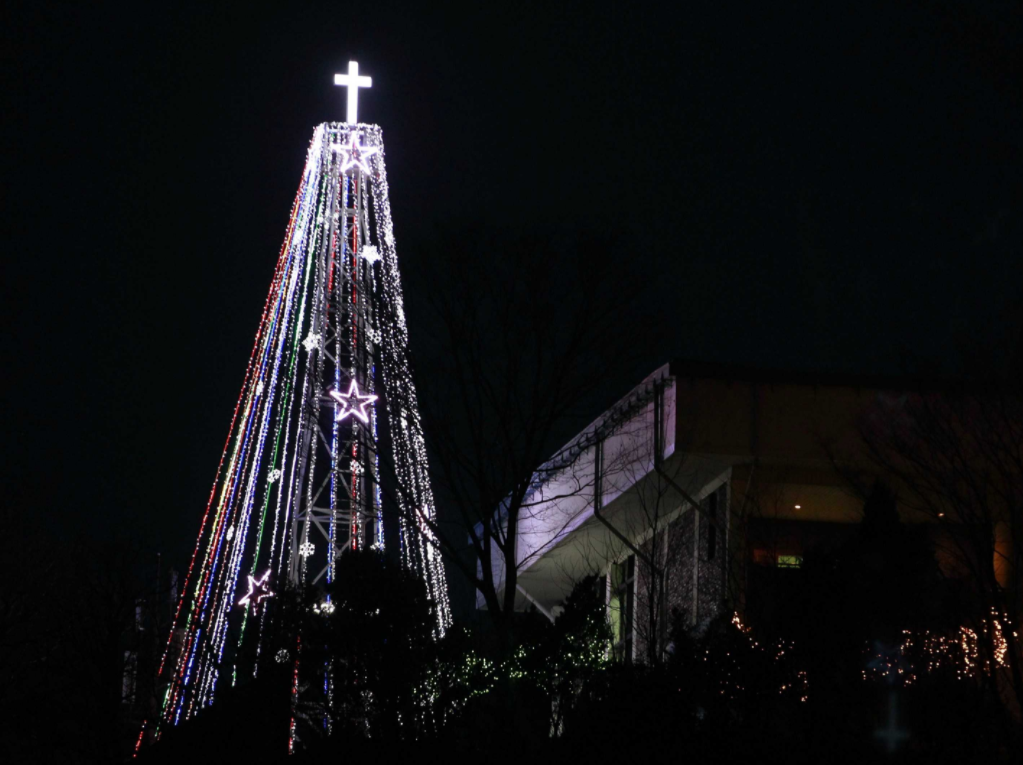The Korean War on Christmas

Christmastime comes with Christmas trees and Christmas lights — both are a way to make a festive time of year even more cheery. But that’s because most of us don’t live just a stone’s throw away from the North Korea/South Korea border. There, something that is typically meant to spread joy instead almost spread harm.

That, charitably speaking, was a light-bespeckled Christmas tree (minus the tree itself, that is, but let’s put that aside). It was a tall one, too, reaching more than 60 feet (18 meters) skyward. Per Slate, it was originally created in 1971 and was lit annually until 2004, and then again starting in 2010. It was located in Gimpo City, a South Korean municipality just south of the North Korean border. Here’s a map.

Gimpo City is where that red flag is, which means, of course, that the “tree” can be seen pretty clearly from many parts of North Korea. And while South Koreans may have seen the tree as a symbol for peace and joy, the North Koreans saw it as one of instigation and propaganda. As the Washington Post explained, “officially, North Korea is an atheist country, and the possession of a Bible can result in imprisonment or even death.abo [ . . . ] Activists have tried to find ways to reach North Koreans by sending them Christian messages. In the past, balloons carrying plastic bags with pamphlets of Bible scripture were sent to the North.” And the North Koreans saw the tree as another, similar effort to subvert their dictatorial ban on Christmas and other things religious.
North Korea wasn’t taking the lights lightly, either. In 2014, per the Telegraph, North Korea “threatened to use artillery fire to destroy it,” a solution which would have likely had many shells miss their targets, wreaking havoc wherever it landed. Quite literally, the North Korean authorities took the threat of tree-shaped string of lights as a provocation for war.
Thankfully, it didn’t come to that. South Korea, just two weeks after announcing that the tree would go forward, capitulated. A spokesperson for the Christian Council of Korea (a South Korean outfit) explained the reasoning to the Guardian: “The establishment of our Christmas tree (tower) was to be a religious event aimed at promoting peace. However, our pure intention caused [an] undesirable misunderstanding that it would aggravate inter-Korean friction.”
Bonus fact: Using an artificial Christmas tree instead of a real one may sound like a great way to help the environment — you’re saving trees, right? — but that may not be the case. According to a 2010 New York Times article, “an environmental consulting firm in Montreal found that an artificial tree would have to be reused for more than 20 years to be greener than buying a fresh-cut tree annually.” Some of the factors involve in the analysis include the greenhouse gasses created when the artificial trees are made, and the fact that real trees are grown specifically to be cut down and put on display in your living room.
From the Archives: A Tree Falls in North Korea: Not a Christmas tree, though. Also, The Christmas Truce: When World War I took a one-day break so combatants could celebrate together.
Related: It’s not quite a treeless Christmas tree, but it’s close.
